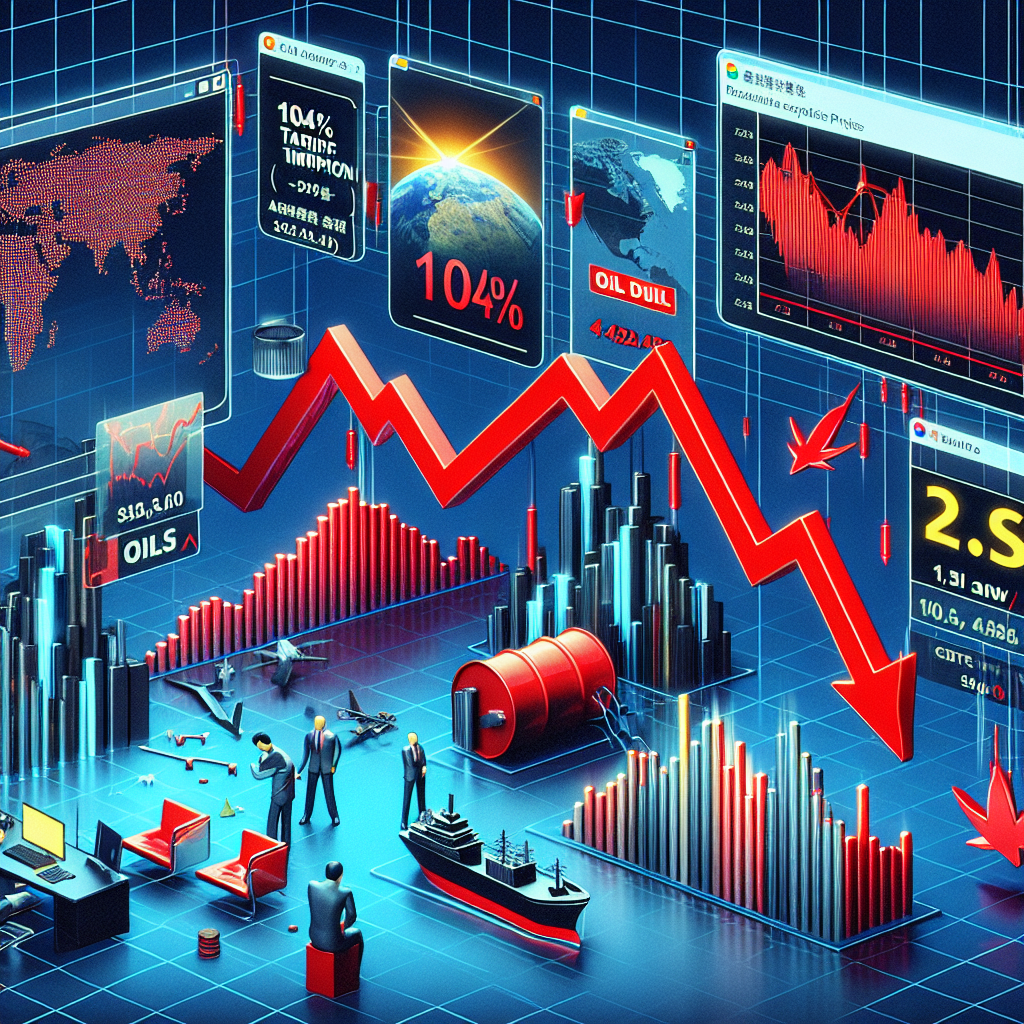On Wednesday, April 9th, as the United States officially imposed a 104% tariff on China, market concerns escalated over the escalation of the US-China trade war. Asian stock markets plunged across the board, oil prices plummeted to a four-year low, the Chinese yuan depreciated to a new low, and the market expected the Federal Reserve to accelerate its interest rate cuts this year.
The US Treasury Department confirmed late on Tuesday that the 104% tariff on Chinese imports would officially take effect after midnight on Wednesday in the Eastern Time Zone. The possibility of ongoing escalation in the US-China trade war has triggered global economic turbulence.
Meanwhile, President Trump is advancing his plan for “equal tariffs” against about 60 trading partners. Prior to the full implementation of the “equal tariffs,” countries are still striving to arrange negotiations with the United States.
There were initial market beliefs that US allies such as Japan and South Korea might reach agreements before the tariff implementation to reduce or postpone Trump’s tariff plans.
Kevin Hassett, the Chairman of the White House National Economic Council, stated on Tuesday that whether there were sufficient reasons to prompt the US to adjust its tariff policy would be determined by Trump himself.
Hassett emphasized that Trump has clearly prioritized Japan and South Korea, saying, “The progress of dialogues with these two countries has been very positive, bringing substantial benefits to American workers and farmers. There are already a lot of concession conditions on the negotiation table.”
These developments caused significant turmoil on Wall Street. The S&P 500 fell by 1.6% on Tuesday, nearing the brink of a bear market. However, the index had achieved its largest intraday gain since 2022 earlier in the day.
As hopes of immediate agreements gradually faded, market sentiment turned pessimistic once again.
In early trading on Wednesday, the main stock indices in Australia, Japan, South Korea, Hong Kong, and China all declined. The Nikkei Index fell by about 3%, and the South Korean stock market was heading towards a bear market, with a decline of over 20% from recent highs.
The “Topix Index,” tracking about 2,000 listed companies on the Tokyo Stock Exchange, plummeted by as much as 3.7% after opening, while the Nikkei 225 Index, representing blue-chip stocks, also dropped by up to 4%, erasing the 6% gain from the previous day due to optimism about the US-Japan trade agreement.
China’s CSI300 Index fell by 1.2%, and Hong Kong’s Hang Seng Index dropped by 3.1%. The overall stock market in the Asia-Pacific region excluding Japan (MSCI Asia Pacific Index) fell by 1.7%.
In Asia early trading, S&P 500 futures dropped by 1.5%, and Nasdaq futures fell by 1.7%. European stock markets were also affected, with EuroStoxx 50 futures down by 4.5% and UK FTSE 100 Index futures down by 2.5%.
In the US bond market, long-term Treasury bond yields rose, partly due to investors selling US bonds to offset losses in other assets. However, short-term bond prices rose, reflecting market bets that the Federal Reserve would accelerate its easing measures.
On Wednesday, the offshore Chinese yuan fell to a historic low of 7.4287 against the US dollar, while the People’s Bank of China set the central parity rate of the yuan at 7.2066 yuan against the US dollar, a depreciation of 0.28 points from the previous trading day, the weakest level since September 2023.
Safe-haven sentiment also boosted the yen, with the US dollar falling to 145.36 against the Japanese yen.
Due to the potential further decrease in Chinese demand, oil prices plunged by over 4% on Wednesday. Brent crude oil futures dropped by 3.9% to $60.36 per barrel, while US crude oil futures fell by 4.4% to $56.96 per barrel.
Gold failed to sustain its upward momentum, with the latest price down by 0.2% to $2,039.76 per ounce, marking its lowest level in nearly a month.

